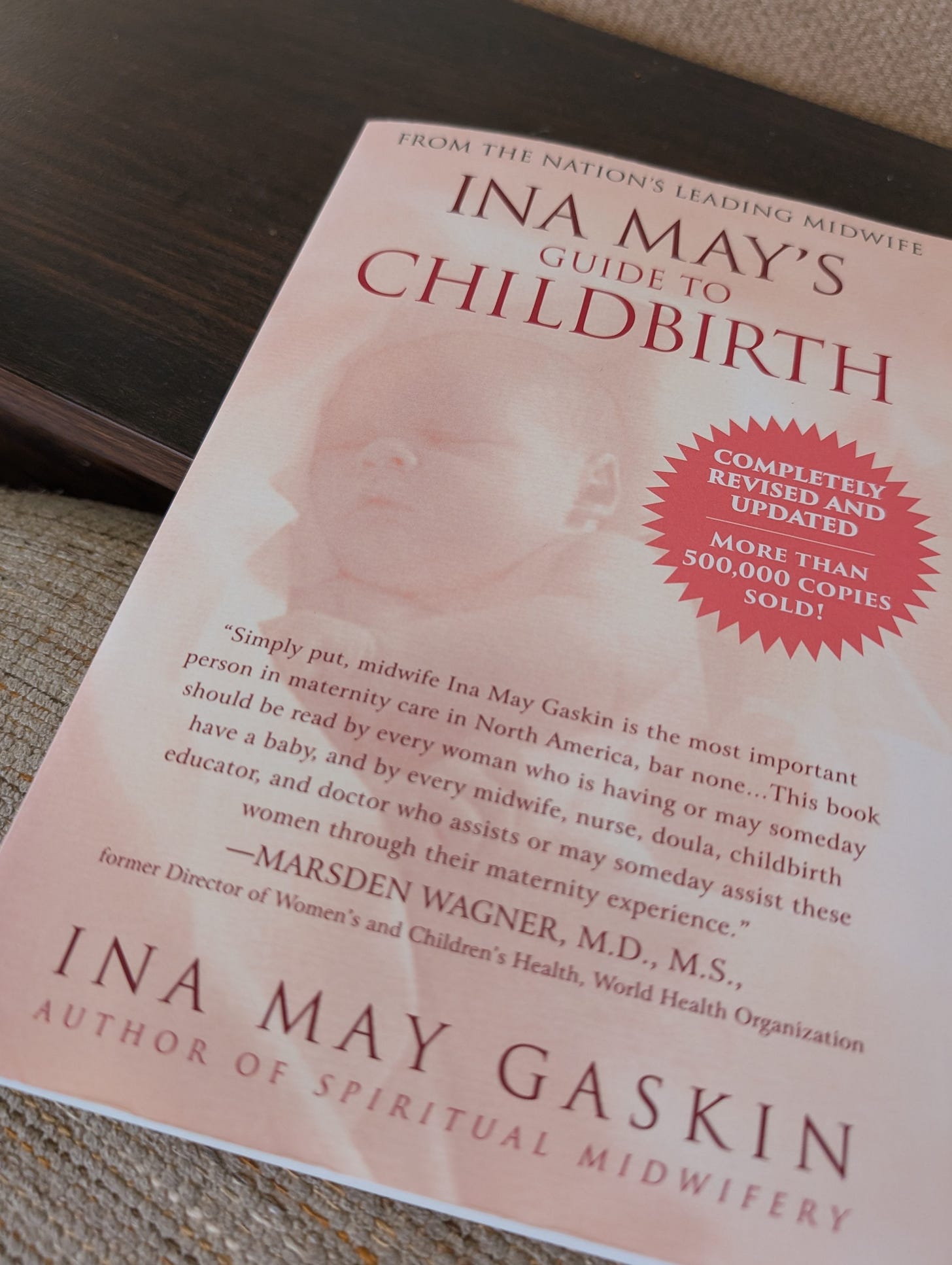Mothers and Babies Deserve a Safe Start
Please take the time to consider in advance what healthcare decisions you will make for yourself and your children, and why. The healthcare system was meant to serve you, not the other way around.
We already know how important the first few years of life are developmentally for children. I mean “know” in the scientific sense, because many of us can’t remember what it was like before we were fully walking and talking. But I would invite some imagination, if possible.
You and I were once infants. What was our start like?
What was your environment in the womb? What chemicals, light, sound, and other stimulation did you receive? How were mother’s nutrition and stress levels?
What was labor and delivery like? Was mother pressured or supported into giving birth? Were there medical interventions such as chemicals, surgeries, forceps, vacuum tubes, etc.?
What were your first moments in the open air like? What interventions did you receive? Did you have time to physically and emotionally bond with your mother?
There are times when medical intervention is necessary to save the life of the mother and the baby. There are times when monitoring is reassuring.
However, modern medical interventions have reached the point of interference with the natural, wise processes that are birth and infant development—especially in America. We treat these processes as inherently flawed and in need of fixing, when what is really most important is to understand them better.
When we become students of the human body rather than students of the system, then we stand a chance at giving mothers and babies the best start.
Mother’s Start
I am not a mother, but I want to be someday. I think about it a lot, considering my own birth story—long, difficult labor followed by a forceps delivery. I want my future children and the other children and mothers in my life to have the best start possible.
With the rise of hospital births and the pressure of medical lawsuits, fear has overshadowed our trust in the natural instincts and capabilities of human bodies.
My impetus for writing this sprang from an article I read recently from Dr. Amandha Vollmer called “Birth is Not Broken. The System Is,” which led me to purchase this book: Ina May’s Guide to Childbirth.
Ina May Gaskin, served as a community midwife for 45 years. Her purpose in writing her book was to take the fear out of the birthing experience. She covers the entire process from prenatal care to labor to postpartum recovery. She explains common medical interventions, their pros and cons, and possible alternatives or preventative measures. And the entire first half of the book is dedicated to stories of births in a variety of circumstances.
Until now, my expectation for childbirth (should the opportunity arise) was to go to the hospital; to lie on a table for hours in rushes of pain while doctors and nurses bustled in and out; to push a baby out into the world and have it immediately whisked away for poking, prodding, measuring, and testing; and to finally to have the bonding time with my husband and my precious little one.
Birth sounds like an industrial, conveyor belt process to think of it this way. But I always assumed the whole process was necessary.
As it turns out, the modern birthing process contains a lot of myths.
Dispelling Birthing Myths:
You do not have to lay on a table to give birth. This is an unnatural but enforced policy due to many hospitals’ desire to constantly monitor you and baby. Constant monitoring is your choice, but you may need to check with the hospital beforehand on their policies.
You do not have to accept epidurals or any other medical procedures. Know in advance what interventions are standard and decide which ones you will want to accept or reject. Ina May’s book is helpful for this, or you may find other resources online.
It is normal and healthy to eat, drink, or get up and move around during labor. You should be allowed to do so. You may need to eat during long labor to keep up your strength and avoid unnecessary surgery. Some hospitals do not like you to eat in case you require general anesthesia, which is not common. Movement may be restricted in order to allow for monitoring equipment to be used. Check with your hospital or birth center ahead of time on their policies if you want to give birth in these settings.
You do not have to give birth in a hospital. Consider a midwife who can help you give birth at home. Midwives support you throughout the entire birthing process. They are on call for you when your body is ready. However, if you do need a hospital that is still an option. If you use an independent midwife, check their credentials ahead of time and get to know them. There are midwives in hospitals, too, but they may be subject to the guidelines of the hospitals where they work. Again, get to know them and how they function in their role.
VBAC is possible and can be a safe and healthy alternative to repeat c-sections. The body is designed to heal, strengthen, and adapt. If surgery is done correctly you can give birth naturally again following a c-section. Don’t let yourself be pressured into repeat c-sections if you want to try natural birth again.
Ina May’s book is frank and enlightening. She talks about differences in ideology between midwives and ob-gyns.
Obstetricians base birthing care around the “Three P’s”:
Passenger (baby)
Passage (birth canal)
Powers (contractions)
What goes “right” or “wrong” in these three areas affects what interventions and procedures are recommended.
For example, if the baby is “too big” or the pelvis is “too small” surgery may be recommended. If contractions aren’t “strong enough” or the mother isn’t dilating “fast enough,” medical intervention may be recommended. These determinations are often arbitrary. A mother's body is more flexible and capable than the modern medical system gives credit for.
Often recommendations and choices are made under pressure in a hospital setting. This is why it is good to have a birth plan in place ahead of time. Then you will have researched & decided in advance which interventions you do or do not want.
Instead of the “Three P’s,” Ina May follows what she calls “Sphincter Law”—which recognizes the strengths and natural abilities of women’s bodies if given the proper support and freedom. (A sphincter is a circular band of muscle that stays contracted most of the time, but will open under certain circumstances. For example, to move something out of the body. Both men and women have them for both excretory & reproductive purposes.)
“[Sphincters] function best in an atmosphere of intimacy and privacy.”
“[Sphincters] cannot be opened at will and do not respond well to commands (such as ‘Push!’ or ‘Relax!’).”
“When a person’s sphincter is in the process of opening it may suddenly close down if that person becomes upset, frightened, humiliated, or self conscious.”
When we consider these rules, is it any wonder that labor can last a long time in a bright, intrusive, time-constrained atmosphere?
Things that can help the sphincters relax:
Laughter Intimacy Privacy Slow, deep breathing Warm water Singing Loving, supportive language Blowing "raspberries"
I’m not sure how often these things happen in a hospital setting, but those who decide to give birth there may need to work a little harder to make their stay feel more at home. How you feel in your body and in your space will affect your birth experience.
Baby’s Start
My other impetus in writing this is a growing concern around infant medical interventions—especially early vaccinations.
In this CDC chart showing the current vaccine schedule, it recommends a total of up to 47 shots over the course of 18 years. 28 of those shots are given within the first 15 months (13 in the first 4 months).
A major concern, even for those who believe viruses cause disease (see my prior articles on this topic), should be the amount of metal adjuvants included in these shots. Adjuvants are believed to prime and “wake up” the immune system. However, they include toxic metals such as aluminum and mercury.
In a prior post, I linked a set of 76 studies on the adverse effects of vaccines. I will highlight only a few below.
Infant Mortality Rates
Infant mortality rates regressed against number of vaccine doses routinely given: Is there a biochemical or synergistic toxicity?
The data in this article showed a strong correlation between the infant mortality rate rising as vaccination rates rise. There is also an indication that some infant vaccinations (DTP, or diptheria + tetanus + pertussis) may be tied to SIDS (sudden infant death syndrome).
“A scatter plot of each of the 30 nation’s IMR [infant mortality rate] versus vaccine doses yielded a linear relationship with a correlation coefficient of 0.70 (95% CI, 0.46–0.85) and p < 0.0001 providing evidence of a positive correlation: IMR and vaccine doses tend to increase together.”
“It appears that at a certain stage in nations' movement up the socio-economic scale—after the basic necessities for infant survival (proper nutrition, sanitation, clean water, and access to health care) have been met—a counter-intuitive relationship occurs between the number of vaccines given to infants and infant mortality rates: nations with higher (worse) infant mortality rates give their infants, on average, more vaccine doses. This positive correlation, derived from the data and demonstrated in Figures 1 and 2, elicits an important inquiry: are some infant deaths associated with over-vaccination?”
“Although some studies were unable to find correlations between SIDS and vaccines,22–24 there is some evidence that a subset of infants may be more susceptible to SIDS shortly after being vaccinated. For example, Torch found that two-thirds of babies who had died from SIDS had been vaccinated against DPT (diphtheria–pertussis–tetanus toxoid) prior to death. Of these, 6.5% died within 12 hours of vaccination; 13% within 24 hours; 26% within 3 days; and 37%, 61%, and 70% within 1, 2, and 3 weeks, respectively. Torch also found that unvaccinated babies who died of SIDS did so most often in the fall or winter while vaccinated babies died most often at 2 and 4 months—the same ages when initial doses of DPT were given to infants. He concluded that DPT ‘may be a generally unrecognized major cause of sudden infant and early childhood death, and that the risks of immunization may outweigh its potential benefits. A need for re-evaluation and possible modification of current vaccination procedures is indicated by this study.’”
Mercury Correlation to Neurodevelopmental Disorders
A dose-response relationship between organic mercury exposure from thimerosal-containing vaccines and neurodevelopmental disorders
Mercury in the hepatitis B vaccine strongly correlates to neurodevelopmental disorders in children, including tics, developmental delay, and hyperactivity.
“[Neurodevelopmental disorders] cases were diagnosed with pervasive developmental disorder (PDD), specific developmental delay, tic disorder or hyperkinetic syndrome of childhood. In addition, putative non-thimerosal-related outcomes of febrile seizure, failure to thrive and cerebral degenerations were examined. The cumulative total dose of Hg exposure from thimerosal-containing hepatitis B vaccine (T-HBV) administered within the first six months of life was calculated. On a per microgram of organic-Hg basis, PDD (odds ratio (OR) = 1.054), specific developmental delay (OR = 1.035), tic disorder (OR = 1.034) and hyperkinetic syndrome of childhood (OR = 1.05) cases were significantly more likely than controls to receive increased organic-Hg exposure.”
Childhood Vaccinations and Autism
A positive association found between autism prevalence and childhood vaccination uptake across the U.S. population
This article found a correlation between increased vaccination and increased instances of autism.
“Although individuals probably have a genetic predisposition to develop autism, researchers suspect that one or more environmental triggers are also needed. One of those triggers might be the battery of vaccinations that young children receive. […]
“The higher the proportion of children receiving recommended vaccinations, the higher was the prevalence of AUT or SLI. A 1% increase in vaccination was associated with an additional 680 children having AUT or SLI. Neither parental behavior nor access to care affected the results, since vaccination proportions were not significantly related (statistically) to any other disability or to the number of pediatricians in a U.S. state. The results suggest that although mercury has been removed from many vaccines, other culprits may link vaccines to autism. Further study into the relationship between vaccines and autism is warranted.”
While several of these articles recommend further study, it seems unlikely that the vaccination schedule will change anytime soon. Vaccines continue to be pushed now more than ever. Unlike most medications which are required to present a list of adverse effects and warnings to the patient, vaccines have no such requirement.
The vaccine schedule has, of course, increased since they began to be routinely recommended in the early 20th century. The list now includes:
Diphtheria* Tetanus* Pertussis* Measles** Mumps** Rubella** Polio (IPV) Hib Hepatitis B Varicella Hepatitis A Pneumococcal Influenza Rotavirus * Given in combination as DTaP ** Given in combination as MMR
This doesn’t include additional shots like flu and COVID, which are also offered to children as they get older.
For convenience, doctors may also offer to give shots in batches, but this means those tiny bodies must deal with more metal adjuvants at once. The consequences of this can be debilitating or fatal. Below is the story of a mother who experienced what can happen when a child is loaded up with vaccines.
A Nurse-Mom’s Story
Jennifer decided to become a nurse after growing up watching her parents care for her disabled sister. Her parents were excellent, loving caregivers. The family held a distrust of doctors, but Jennifer wanted to make a difference by becoming a nurse. She wanted to know how to treat the whole body. So she graduated nursing school, began working, and had her first child.
Her son was smart, full of personality, and talked from a young age. However, he had adverse reactions to his early vaccinations, which weren’t fully recognized at the time.
Then, at 14 months, after another round of vaccinations her son suddenly became so ill he had to be taken to the hospital the next day. A caring nurse discreetly gave Jennifer the contact for VAERS (Vaccine Adverse Event Reporting System). However, doctors refused to acknowledge that her son’s reaction could have anything to do with the vaccines.
Jennifer’s little boy, who used to be full of life and personality, suddenly stopped talking. It was as if her baby had been replaced with another baby. He displayed “autism-like” symptoms as he grew.
I recommend watching her full story. Knowing doctors couldn’t give her the help she needed, she found support in a group of other moms whose children had also experienced adverse effects. These women shared notes and found whatever ways they could to help their children.
Not every child has acute reactions to vaccines. However, if toxic metals are not eliminated from the body, they will accumulate and create chronic issues later in life. This—aside from the fact that vaccines do not contain purified “dead viruses” as we are told, but rather a soup of foreign biological material that doesn’t belong in our bodies—should be reason for us to stop and think.
We are told that vaccinations give children a safe start to life. A little pain now, to save a lot of pain later. This philosophy resonates with me—it’s how I prioritize my work and other duties. But it does not apply to vaccines.
Please take the time to consider in advance what healthcare decisions you will make for yourself and your children, and why. It is important to know what is in anything injected being directly into the bloodstream and what the side-effects might be, assuming the doctors and manufacturers are straightforward. Both mothers & babies receive vaccines—before and after birth.
I speak from experience. When children suffer, parents suffer. When parents suffer, children suffer.
The most important thing to recognize is that you do have a right to know your options and you do have a right to choose.
The healthcare system is meant to serve you, not the other way around.
Quality of life matters, which is why we should try to protect it from the very start.
Prayers for you, children and mothers.
With Love,
Ordinary Girl














